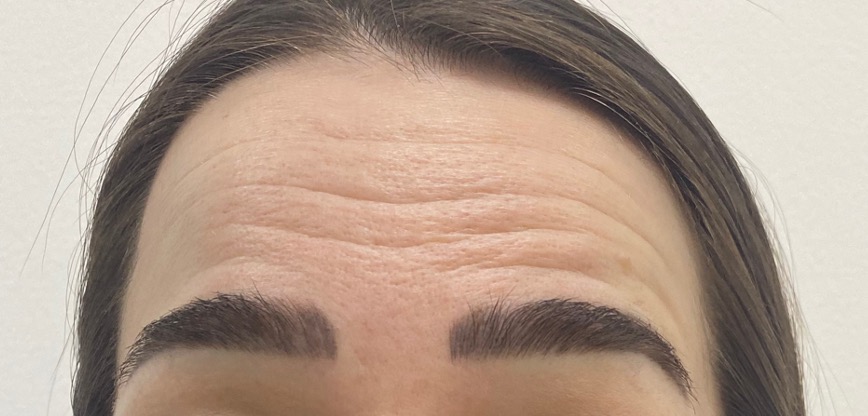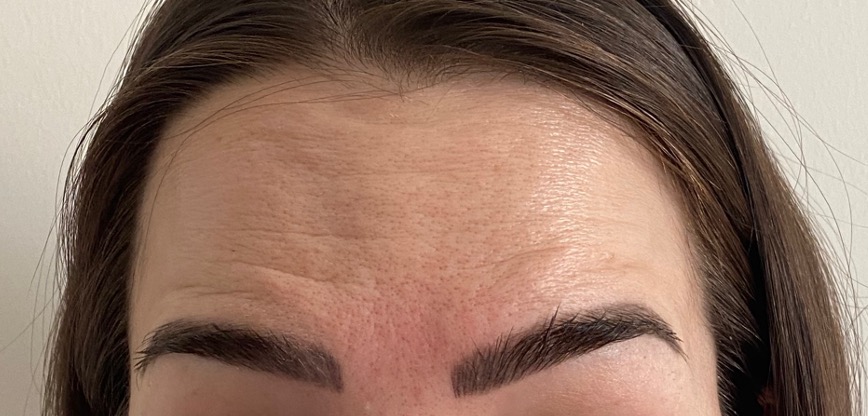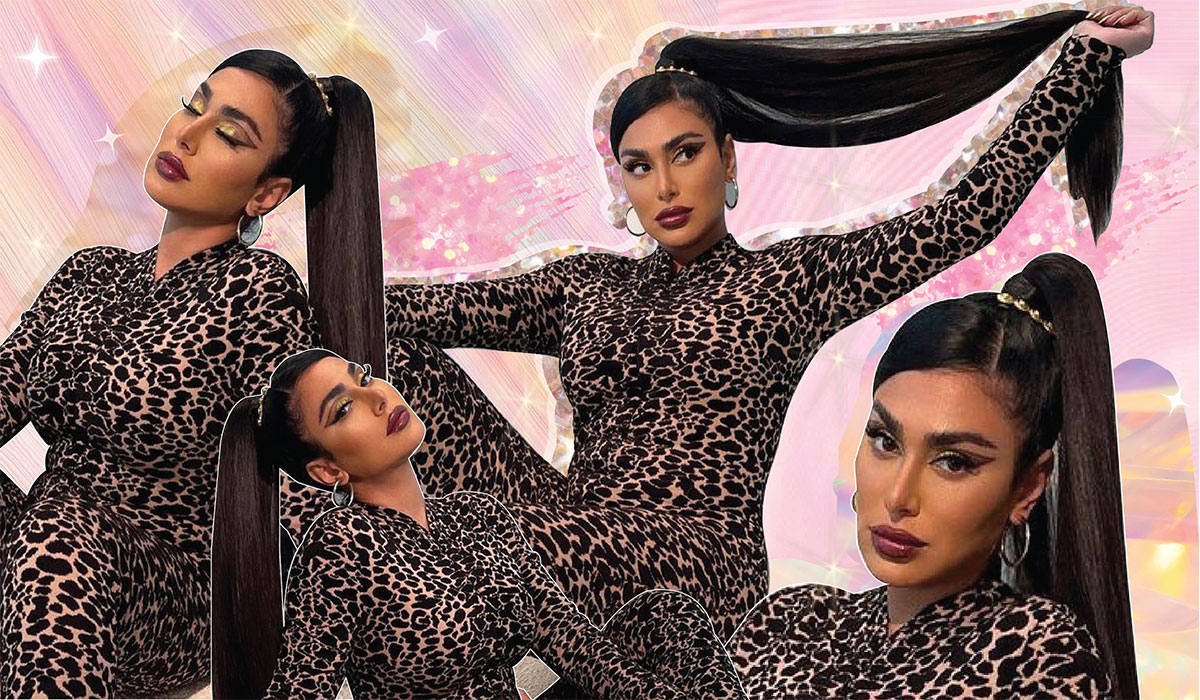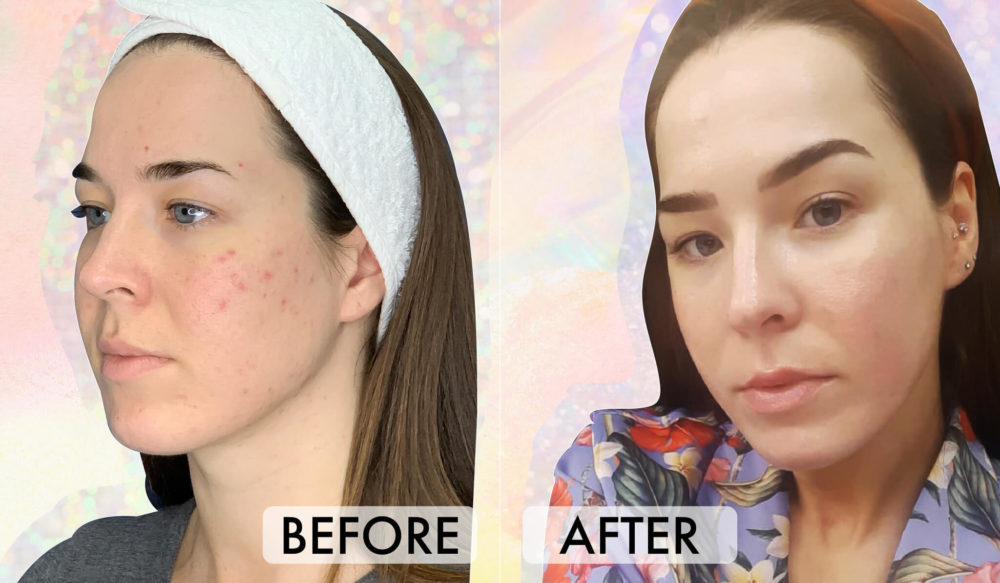We Tried Botox Microdosing: Here’s Everything You Need To Know
 via Giphy
via Giphy
One of the biggest fears people have about Botox is looking like their entire face has been frozen solid. You know what we’re talking about… The severe, “can’t lift my eyebrows,” “can’t make expressions” look. The good news is that these issues are easily avoided by sticking to the recommended amount of Botox and only re-upping at suggested intervals.
However, more and more people are starting to use even less than the recommended number of units at their appointment, a rising trend in aesthetics referred to as Botox “microdosing” or “baby Botox.” Ahead, we’re covering what Botox microdosing is, what its benefits are, and who’s considered the ideal candidate.
A Typical Botox Appointment
To understand what Botox microdosing is, we should first cover regular Botox. The recommended number of units injected during a typical Botox appointment is between 60 and 80. These units are spread out between various muscles in the upper face, including:
This recommended amount of Botox relaxes each of the muscles entirely, which creates a smoothing effect that makes those dynamic fine lines and wrinkles disappear within two weeks of your appointment. While some movement can remain, your muscles may be so relaxed that expressions in the upper face are muted.
 via Giphy
via Giphy
What is Botox Microdosing?
As mentioned above, Botox microdosing involves injecting fewer units into the muscles we listed above. While typical Botox uses anywhere between 60 to 80 units, Botox microdosing involves significantly fewer units – sometimes as low as 20 or 30.
“Unlike the typical Botox that relaxes each muscle entirely, Botox microdosing is a preventative measure that minimally softens the function of each muscle,” says Nicole Frontera, a nurse practitioner injection specialist and owner of Nicole Frontera Beauty.
Basically, this smooths out wrinkles and helps prevent deeper lines from occurring in the future, but it still allows for expression and movement. Also, it saves you a lot of money. “Since the goal of Botox microdosing is prevention, the ideal candidate would be a younger person who is just starting to see fine lines and wrinkles at rest, so late 20s early 30s,” notes Frontera.
Posts You'll Love:
Drawbacks of Botox Microdosing
While the benefits abound, there are some baby Botox drawbacks to consider, as well. For starters, those with deeper wrinkles may find that it’s simply not enough to smooth their skin. Also, people with larger or more active muscles may realize that they need more than a microdose.
Baby Botox can also wear off more quickly for everyone, which means you may find yourself making more frequent appointments. Frontera says, “A treatment of full dose will last three to four months, and Botox microdosing between two to three months.” It’s more maintenance, but some people do prefer the lower dosage, higher appointment frequency approach because of the softer results they get. It’s truly a personal preference.
Can Too Much Botox Cause Permanent Damage?
 via Giphy
via Giphy
Botox is considered safe and has many perks, but too much may create issues over time. “High amounts of Botox may be detrimental later on for one facial muscle in particular – the frontalis,” says Frontera. “The frontalis is the forehead muscle, which is responsible for elevating your eyebrows. If you prematurely start using Botox and take out all the function of that muscle, you can cause a premature drop to the brow.”
In the short-term, too much Botox can make your brows feel heavy or make your eyelids look slightly droopy. Conversely, it may make your eyebrows appear more lifted than what you prefer.
Our Experience with Botox Microdosing:
 Brows fully raised before Baby Botox
Brows fully raised before Baby Botox
When we first visited Plastic Surgeon and Founder of the Elite Cosmetics Clinic in Dubai, Dr. Allen Rezai, three years ago for our first dose of Botox, he refused to give it to us (the sign of a truly honest doctor!). His reasoning was that there wasn’t significant creasing on our forehead to warrant the Botox and that starting Botox “before lines appeared with a resting expression” was too early. Instead, he recommended a course of PRP to rejuvenate our skin – it was quite possibly the best thing we ever did (check out our PRP results here).
Three years later and now in our early 30s, we returned to Dr. Rezai for Botox to treat the now more apparent lines on our forehead. Dr. Rezai suggested Baby Botox would be the best course of action, and we have to say, we were extremely happy with the result.
 Brows fully raised 7 weeks after Baby Botox
Brows fully raised 7 weeks after Baby Botox
Baby Botox Results: After one week, we noticed the Botox taking effect; I could raise my brows and still frown so that basically no one noticed I had Botox! As someone who makes a lot of expressions, my overactive forehead creasing was gone, and instead, a more natural and subtle brow raise appeared. I loved that my forehead lines were practically gone but I could still make natural expressions.
 Brows at resting expression 7 weeks after Baby Botox
Brows at resting expression 7 weeks after Baby Botox
About 7 weeks from my first appointment, I am noticing more movement, it’s still more subtle than before and I don’t have any lines on my forehead in a rested position, but if I really try to raise my brows, more expression is beginning to appear. Overall we love the natural result that makes us look and feel refreshed but also still 100% us.
Bottom Line: Whether choosing a typical treatment or microdose, Botox should always be administered by a credentialed, well-respected medical professional. This person can guide you on the best approach for your aesthetic goals and ensure you’re happy with your results every time.
Confused about injectables? We gotchu. Check out our guide on the difference between filler, Botox, and great skincare.























Leave a comment